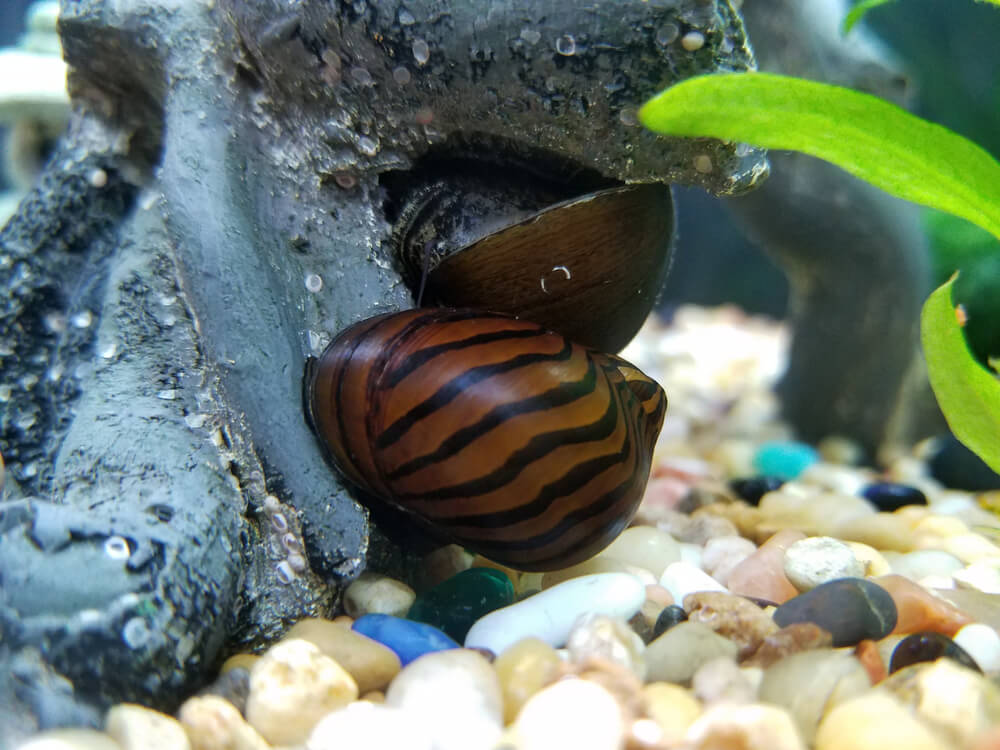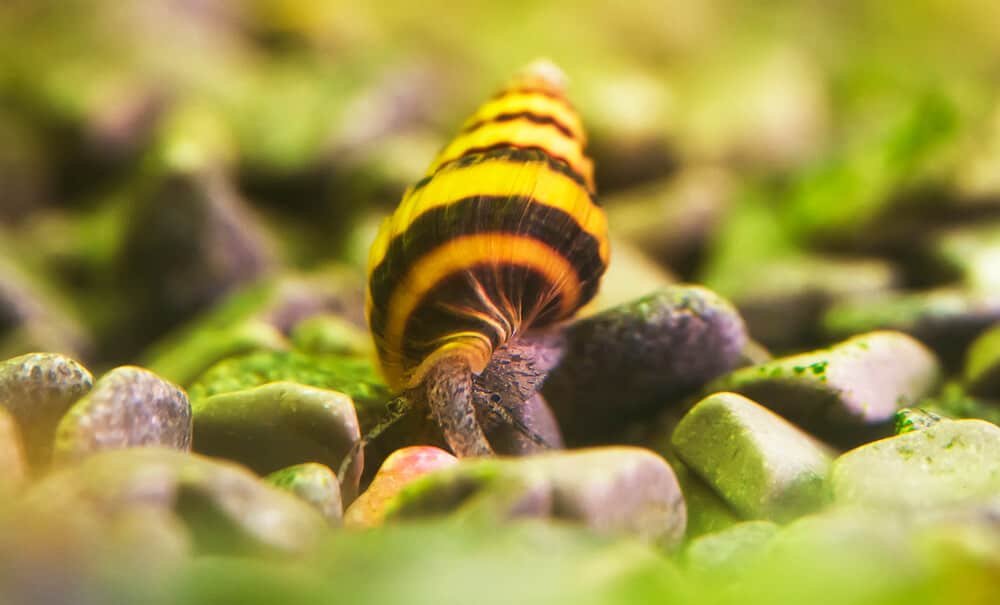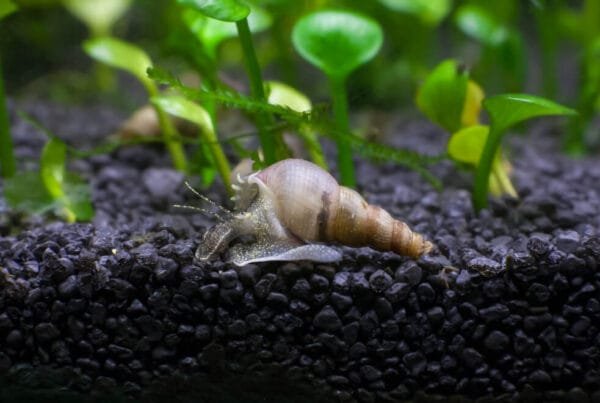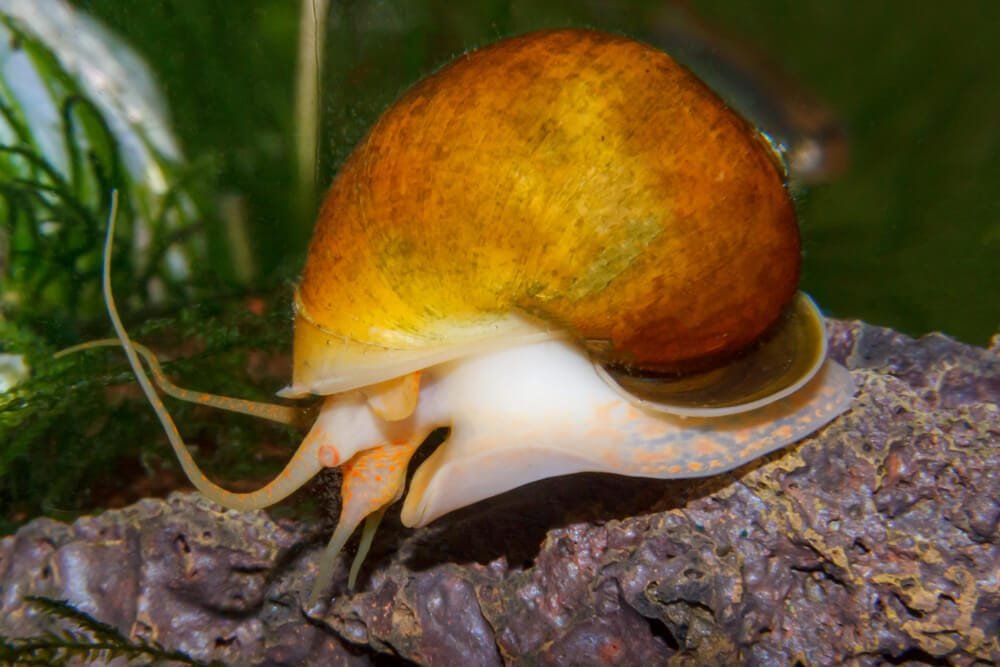Imagine adding a beautiful and low-maintenance creature to your aquarium that not only helps maintain a clean and algae-free environment but also adds a touch of elegance to the overall aesthetic. Look no further than the Nerite Snail. This small yet remarkable aquatic species is a popular choice among aquarium enthusiasts for its excellent algae-eating abilities, striking patterns, and peaceful temperament. Whether you are a beginner or an experienced hobbyist, the Nerite Snail is undoubtedly a delightful addition to any underwater paradise.
Physical Characteristics
Shape
Nerite snails have a unique and distinctive shape. They have a spiral-shaped shell that is coiled tightly, giving them a compact appearance. The shell is conical in shape, tapering towards the apex and expanding towards the opening. This shape allows the snail to retract its body completely into the shell for protection.
Size
Nerite snails come in various sizes depending on the species. On average, they range from half an inch to an inch in length. Some species can grow slightly larger, reaching up to two inches in length. Despite their small size, these snails are packed with personality and make a fascinating addition to any aquarium.
Shell
The shell of a nerite snail is hard and durable. It serves as both protection and a means of anchoring itself to surfaces. The shell is typically ridged, with intricate patterns and different color variations depending on the species. Some nerite snails have beautiful zebra-like stripes, while others have intricate spiral patterns. The shells can be smooth or slightly rough to the touch, adding to their unique texture.
Coloration
One of the remarkable features of nerite snails is their vibrant coloration. They come in a range of colors, from shades of black, brown, and olive to vibrant yellow and orange. The coloration of the shell often complements their surroundings, allowing them to blend into the aquarium environment or stand out as eye-catching accents. This diversity in coloration adds visual interest and beauty to any tank.
Habitat and Distribution
Freshwater Nerites
Freshwater nerite snails are mainly found in rivers, streams, and freshwater lakes. They are well adapted to thrive in these environments, thanks to their ability to tolerate various water conditions. Freshwater nerites prefer calm waters with low to moderate flow, as this allows them to move and forage easily. They can be found clinging to rocks, plants, and driftwood.
Saltwater Nerites
Saltwater nerite snails inhabit coastal areas, estuaries, and mangrove forests. They are adapted to withstand the challenges of saltwater, including salinity levels and exposure to tides. Saltwater nerites are often found attached to submerged rocks, coral reefs, and the roots of mangrove trees. Their ability to thrive in both freshwater and saltwater makes them a versatile choice for aquarium enthusiasts.
Native Range
Nerite snails have a wide distribution, with various species found in different parts of the world. They are native to regions such as Southeast Asia, Africa, and the Americas. Each species has its own unique habitat preferences within these regions. For example, the Zebra Nerite Snail is native to freshwater habitats in Southeast Asia, while the Horned Nerite Snail can be found in brackish water along the coastlines of Africa.
Introduced Range
Due to their popularity in the aquarium trade, nerite snails have been introduced to many other regions outside their native range. This has led to established populations of nerite snails in places like Europe, North America, and Australia. While their introduction has sometimes raised concerns about potential ecological impacts, nerite snails are generally considered beneficial members of aquarium ecosystems.
Diet and Feeding Habits
Algae Consumption
One of the primary reasons why many aquarium enthusiasts love nerite snails is their voracious appetite for algae. They are excellent algae eaters and can efficiently control algae growth in an aquarium. Nerite snails will eagerly consume various kinds of algae, including green spot algae, hair algae, and diatoms. They glide along surfaces, scraping off algae with their radula, a specialized structure in their mouth that acts like a rasp.
Detritus Consumption
Nerite snails also play a crucial role in maintaining aquarium cleanliness by consuming detritus. Detritus consists of organic debris, such as uneaten fish food, decaying plant matter, and fish waste. Nerite snails can quickly devour detritus, preventing it from accumulating and causing water quality issues. Their scavenging behavior helps to keep the aquarium environment clean and balanced.
Supplemental Feeding
While nerite snails primarily rely on algae and detritus as their main food sources, it is essential to provide them with supplemental feeding. This ensures they receive a well-rounded diet and remain healthy. You can offer them commercial sinking pellets or algae wafers. It’s important not to overfeed, as excess food can lead to water pollution. Observing the snails’ feeding behavior will help you determine the right amount of supplemental food to provide.
Reproduction and Lifecycle
Sexual Reproduction
Nerite snails reproduce sexually, requiring both a male and a female. However, it can be challenging to differentiate between males and females externally, as they have similar physical characteristics. During the breeding process, the female will lay eggs on hard surfaces, such as rocks or the sides of the aquarium. These eggs are small, jelly-like, and can be a translucent white or greenish color, depending on the species.
Egg Development
After eggs are laid, they will undergo a period of development. However, it’s important to note that the eggs of most nerite snail species will not hatch in freshwater aquariums. They require brackish or saltwater conditions for successful development and hatching. This natural reproductive strategy helps protect the snail population from becoming overpopulated in freshwater environments.
Hatching and Larvae
If the eggs are in a suitable environment, they will hatch into larvae. The larvae will spend a brief period swimming in the water column before settling onto a surface and undergoing metamorphosis into juvenile snails. It’s important to create a separate rearing tank with proper salinity levels if you intend to breed nerite snails and raise their offspring. This specialized care ensures the survival and well-being of the young snails.
Juvenile and Adult Stage
Once the larvae have settled and transformed into juvenile snails, they will start to grow. The juvenile snails resemble miniature versions of their adult counterparts but may have a slightly different coloration or pattern. As they continue to mature, they will gradually reach their full size and develop the distinct shell characteristics of their species. The exact time it takes for the juveniles to reach adulthood varies depending on the species and environmental conditions.
Behavior and Movement
Activity Patterns
Nerite snails are generally active throughout the day, although their activity levels might vary from species to species. Some nerite snails are more active during the daytime, while others may be more active during the evening or night. Their activity is influenced by factors such as water temperature, lighting conditions, and the presence of food. Watching these snails explore their surroundings and move about the aquarium can be a fascinating sight.
Attachment and Locomotion
Nerite snails have a unique way of moving and attaching themselves to surfaces. They possess a muscular foot that allows them to move in a crawling motion. This foot also helps them adhere firmly to different surfaces, such as rocks, glass, and plants. Thanks to their ability to attach themselves securely, nerite snails can explore beyond the aquarium floor and climb on various vertical surfaces, adding a dynamic element to the tank’s visual appeal.
Tank Requirements and Care
Water Parameters
Maintaining suitable water parameters is crucial for the health and well-being of nerite snails. They prefer a stable environment with good water quality. The ideal temperature range for most species is between 72°F and 78°F (22°C and 26°C). The pH level should be kept between 7.5 and 8.4, and the water hardness should be around 8-12 dKH. Regular monitoring of ammonia, nitrite, and nitrate levels is essential to ensure optimal conditions for the snails.
Tank Size
Nerite snails can be kept in tanks of various sizes, depending on the number of individuals and other tank inhabitants. As a general guideline, providing at least 5 gallons (19 liters) of water per snail is recommended to ensure they have ample space to move and explore. If you plan to have multiple nerite snails, a larger tank with more surface area and hiding spots is preferable.
Tank Mates
Nerite snails are generally peaceful creatures that can coexist with a wide range of fish and invertebrate species. They make excellent tank mates for community aquariums. However, it’s crucial to avoid keeping them with aggressive or predatory species that might harm or harass the snails. Be mindful of the snails’ size and ensure that they are not at risk of being mistaken for food by larger fish or invertebrates.
Feeding and Maintenance
Feeding nerite snails is relatively easy and requires minimal effort. As mentioned earlier, they primarily feed on algae and detritus, making them excellent natural cleaners for your aquarium. Additionally, providing supplemental sinking pellets or algae wafers a few times a week will help maintain their overall health and vitality. Regular water changes, substrate vacuuming, and routine maintenance will contribute to a clean and thriving tank environment for the snails.
Benefits for Aquariums
Algae Control
Nerite snails are renowned for their exceptional algae control abilities. Their insatiable appetite for various types of algae helps keep the aquarium clean and free from unsightly algae growth. Whether it’s green spot algae on glass or hair algae on plants, these snails can efficiently graze on the nuisance algae, providing a natural and effective solution for algae control.
Tank Cleaning
In addition to controlling algae, nerite snails also play a vital role in overall tank cleanliness. Their constant scavenging for detritus and organic debris helps prevent it from accumulating and decomposing, which can negatively impact water quality. By consuming detritus, nerite snails reduce the risk of ammonia and nitrite spikes, ensuring a healthier living environment for other aquarium inhabitants.
Compatibility with Plants and Fish
Another benefit of having nerite snails in your aquarium is their compatibility with live plants. Unlike some other snail species, nerite snails are generally plant-safe and will not damage or consume healthy plants. They can even help control algae growth on plant leaves, ensuring the plants receive enough light for photosynthesis. Additionally, nerite snails are peaceful creatures that pose no threat to fish, making them excellent tank mates for a wide range of species.
Potential Drawbacks
Overpopulation
Although nerite snails reproduce, the eggs of most species cannot hatch in freshwater aquariums. This limited breeding ability helps prevent overpopulation in confined tank environments. However, some individuals might find that their snails lay eggs that do not hatch, leading to the accumulation of unattractive egg clusters on various surfaces. While harmless, these egg clusters can be unsightly and require periodic removal if desired.
Intolerance to Specific Water Parameters
While nerite snails are generally adaptable to different water conditions, some species may be sensitive to specific parameters. For example, certain species prefer slightly brackish or saltwater conditions for successful breeding and development of their young. It’s crucial to research the specific requirements of the species you intend to keep to ensure their long-term health and well-being.
Species Varieties and Popular Types
Zebra Nerite Snail
The Zebra Nerite Snail (Neritina natalensis) is one of the most popular and readily available nerite species in the aquarium trade. As its name suggests, it has striking black and yellow zebra-like stripes on its shell. Zebra Nerite Snails are primarily found in freshwater habitats in Southeast Asia and are known for their excellent algae-eating capabilities.
Tiger Nerite Snail
The Tiger Nerite Snail (Neritina turrita) is another captivating species in the nerite snail family. It has a beautiful shell pattern consisting of black and brown stripes that resemble the stripes of a tiger. Tiger Nerite Snails are native to freshwater habitats in Southeast Asia and are highly sought after for their ornamental value and algae-eating prowess.
Horned Nerite Snail
The Horned Nerite Snail (Clithon corona) is a unique species known for the small horns on its shell. These horns give the snail an interesting and distinctive appearance. Horned Nerite Snails are predominantly found in brackish water along the coastlines of Africa and are sought after for their ability to control algae growth in aquariums.
Red Racer Nerite Snail
The Red Racer Nerite Snail (Vittina waigiensis) stands out from other nerite snails due to its vibrant red or orange shell coloration. This species is native to the Indo-Pacific region and is highly prized by aquarium enthusiasts for its striking appearance. Red Racer Nerite Snails are excellent algae eaters and can add a pop of color to any aquarium.
Availability and Cost
Pet Stores
Nerite snails are commonly available in many pet stores that specialize in aquarium supplies. Local fish stores and dedicated aquarium shops often stock a variety of nerite snail species, allowing you to choose the one that best suits your preferences and tank environment. It’s advisable to call ahead and inquire about stock availability before making a trip to the store.
Online Retailers
In addition to brick-and-mortar stores, nerite snails can also be purchased from various online retailers. Online platforms that cater to aquarium enthusiasts often offer a wide range of species and provide convenient shipping options. When purchasing nerite snails online, it’s important to choose trustworthy sellers who prioritize the health and well-being of their livestock.
Price Range
The price of nerite snails can vary depending on several factors, such as the species, size, and availability. Generally, nerite snails are considered affordable and can range anywhere from a few dollars to several dollars per snail. Rare or particularly striking color varieties may be more expensive due to their uniqueness and popularity. It’s important to consider the initial cost of acquiring nerite snails, as well as ongoing care and maintenance expenses, when planning to add them to your aquarium.







